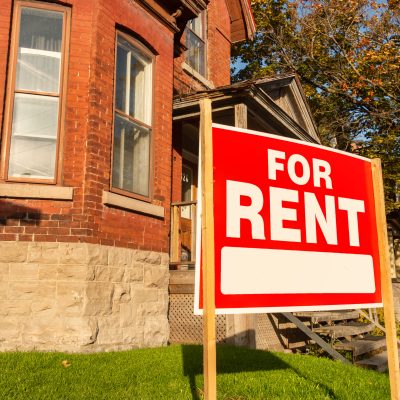Negative gearing reforms can save $1.7 billion, new research shows

— Negative gearing reforms can work without hurting ‘mum and dad’ investors–
— Existing discounts are skewed towards the more affluent –
Reforming negative gearing can save the Australian Government more than $1.7 billion each year without hurting ‘mum and dad’ investors, AHURI research released today finds.
The research, The income tax treatment of housing assets: an assessment of proposed reform arrangements, also reveals that the typical negatively geared investor is a middle-aged male, employed full-time with an average taxable income of $80,000 after deducting rental expenses.
The report was commissioned by the Australian Housing and Urban Research Institute and conducted by researchers from Curtin University and Griffith University. The report models reforms to negative gearing and capital gains tax (CGT) that are likely to reduce the impact on ‘mum and dad’ investors.
Report author Professor Alan Duncan, from the Bankwest Curtin Economics Centre at Curtin University, said the research sought to explore an approach to reform that has the least impact on investors with the lowest incomes.
“Current negative gearing policies are heavily skewed towards high income earners, raising concerns about the extent to which these policies exacerbate income and wealth inequality in Australia,” Professor Duncan said.
“There is concern among policymakers that reforms to negative gearing may have adverse impacts on ‘mum and dad’ investors.
“Our modelling suggests that a progressive rental deduction for investors cushions less wealthy ‘mum and dad’ investors from significant drops in tax savings, and may be an appropriate policy option,” Professor Duncan said.
The reform model proposes that investors in the bottom 50 per cent of the income distribution continue to receive a 100 per cent rental deduction; those in the 51st–75th percentiles receive a lower 50 per cent rental deduction, and those in the 76th–100th percentiles (representing ‘sophisticated’ investors) receive zero rental deductions.
Professor Duncan said such a reform would save Government more than $1.7 billion from the annual $3.04 billion cost of negative gearing deductions each year – a 57.3 per cent saving.
The research also identified that CGT discounts are heavily weighted towards those who are more affluent. These investors, on average, own a property portfolio worth more than $730,000 and have a tax assessable income of $82,000, compared to $31,000 for renters who do not own any properties.
Report co-author Professor Rachel Ong ViforJ from the School of Economics and Finance at Curtin University said modelling shows that reducing CGT exemptions means high income investors will pay more tax than lower income investors, but the tax amount will represent a lower proportion of their take home income.
“The reform would be progressive in nature, reducing negative gearing tax savings by greater margins as tax assessable income increases,” Professor Ong ViforJ said.
“It remains that any CGT policy reform will need to be carefully communicated to avoid a misconception that the changes will have a proportionate impact on rental investors’ net incomes,” Professor Ong ViforJ said.
Key findings of the report include:
- Negative gearing and capital gains tax (CGT) discount benefits are currently heavily skewed towards those who are more affluent, with higher incomes and greater property portfolios.
- Reforming rental deductions could provide greater tax concessions to ‘mum and dad’ investors and reduce the generous concessions that ‘sophisticated’ investors on higher income currently receive.
- A reduction in the CGT discount also has the potential to reduce inequality, as higher income earners will pay more tax, however this equates to a smaller percentage of their overall income than lower income investors.
- CGT reform could be gradual, to soften the impact by providing a transition pathway that raises after-tax costs incrementally.
The typical investor
- On average, a home-owner investor can own a property portfolio worth more than $730,000. Home-owner investors’ average tax assessable income is $82,000 compared to $31,000 among renters who do not own any properties.
- The typical negatively geared investor is male, aged in his mid-to-late forties, and employed full-time and has an average pre-tax income of $91,000.
- On the other hand, positively geared investors tend to be evenly split between males and females and more likely to be older and retired.






